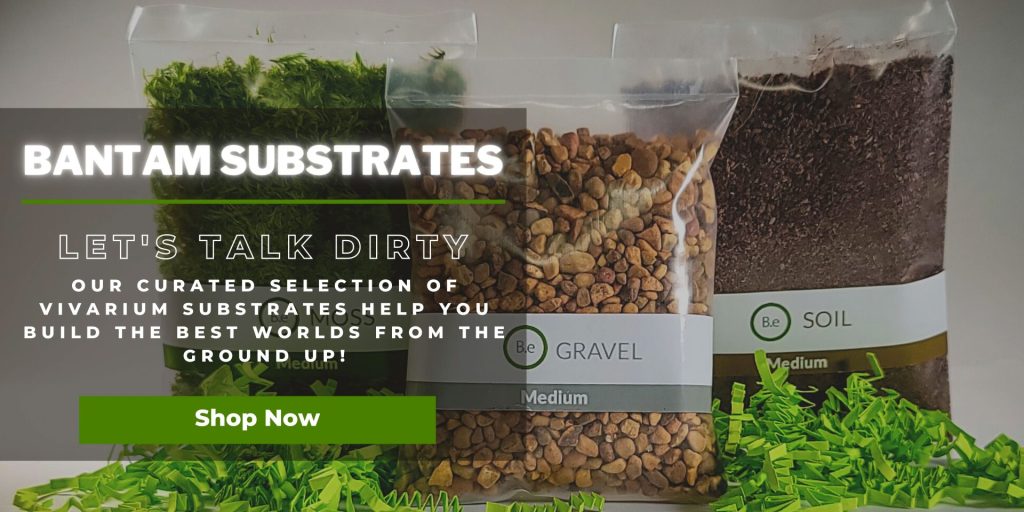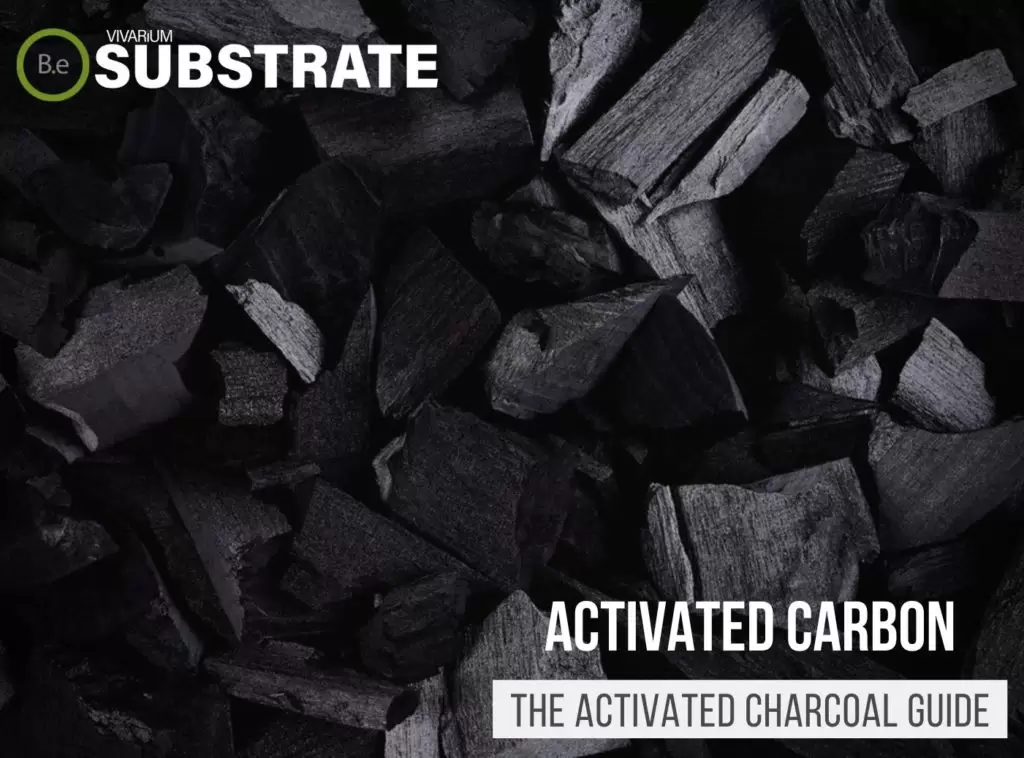Hydroton is one of the most popular choices for the drainage layer medium within the vivarium hobby.
Even though it was designed for use in hydroponics, its ability to retain water and nutrients has made it highly effective as a type of substrate as well as filter media in aquariums and terrariums.
The advantages far outweigh the disadvantages when compared to other grow media alternatives.
This article will serve as a reference guide to everything you should know about expanded clay pebbles if you are considering using them.
Table Of Contents:
ToggleWhat Is Hydroton?
Hydroton, also known as lightweight expanded clay aggregate (or LECA for short), is a type of clay that has been engineered to specifically be used as growing media in aquaponics setups.
It is made by heat and tumbling in a rotary kiln.
As the kiln is heated up to 2,000 degrees Fahrenheit, the clay slowly expands into small balls filled with bubbles as gas is released from its core.
The result is a pebble of clay ranging in a number of sizes covered in a porous surface.


Expanded Clay Pebble Facts
Expanded clay pebble is referred to by a number of names.
Some of the more common names include Hydroton, Leca Balls, and Hydroballs to name a few.
This is due to the marketing of companies that sell the expanded clay pebble using their own signature names to distinguish their product from other competitors.
As mentioned earlier, these balls are sold as grow media in systems where regular soil isn’t ideal for use.
This pebble is often reusable and easier to maintain in setups that use large amounts of water and complex filtration equipment.
Description
Regardless of which company is manufacturing the expanded clay balls, the process of making them is relatively similar.
Therefore, the look of the clay balls will look the same.
A typical clay pebble will be reddish-brown on the surface with a dark brown or black interior when broken open.
A porous surface can be exhibited with numerous amounts of bubbles formed within.
Hydroton balls are circular or oval in shape and come in a variety of sizes.
Sizes can range from as small as 0.01mm to as large as 25mm in diameter depending on the manufacturer.
LECA boulders are the biggest sizes known to have been made ranging from 100 to 500mm in diameter.
Common sizes used in vivarium practice will range from 4mm to 25mm.
The density of dry expanded clay balls is thought to be extremely light ranging from 250 to 510 kg/m3.
Habitat
Clay can be found all over the world, mostly in areas where rivers once flowed.
It is the accumulation of minerals and decomposed organisms all compressed into small particles.
It is the very make-up of soil in its purest form.
Expanded clay is a man-made form of fine matter that is harvested into a larger, more useful size that can be combined with other substrate materials or used independently.
Environmental Influence
One of the biggest advantages of the use of Hydroton is its effect on the environment.
Clay is an inert material, meaning it has a neutral PH of 7 and will not buffer the enclosure it is placed within.
It doesn’t leech minerals of any kind and has the ability to absorb nutrients that can be redistributed back out to its surroundings.
Expanded clay aggregate breaks down extremely slowly and even then, the sediments left behind have no noticeable impact on the habitat.
Vivarium Type
Hydroton is proven to be beneficial in a number of vivariums.
It is best used as a drainage medium in tanks that require false bottoms.
Its porous texture makes it great for use in sumps as well where healthy bacteria can accumulate and help break down toxins.
Here is a recommended list of vivarium types expanded clay pebble is commonly used in:
- Paludariums – Half aquatic/ half terrain-based enclosure.
- Ripariums – Mostly aquatic-based enclosures with some terrain features present.
- Terrariums – Fully terrain-based enclosures with little to no aquatic features.
- Aquariums – Fully aquatic-based enclosure with no terrain features.
Vivarium Usage
Hydroton has a very specific use in vivariums.
Even though it is a type of substrate, it works well as topsoil in terrariums.
It is too arid to hold retain moisture on its own as a standalone substrate.
Expanded clay aggregate is better equipped for use in systems that can be fully submerged in water.
The type of enclosure it is being used in will better determine how it should be used.
In terrariums, Hydroton is most known for its use in the drainage layer of the tank.
Clay balls are excellent for providing surface space beneficial bacteria can populate.
If Hydroton is being used as a growing media in a more aquaponic format, a constant source of water will continually need to pass through the pebble to avoid drying out.
Furthermore, Hydroton can be used in aquatic tanks like aquariums or ripariums as well.
Expanded clay makes a great filtration medium in sumps where bacteria can help keep toxins down within the vivarium.
Hydroton could also be used as a standalone substrate in aquariums where many plants with strong enough root structures will root through.
Advantages
When used correctly, Hydroton is a superior choice for drainage medium when compared to other alternatives.
Its lightweight makes it better suited in large volumes than rocks.
Clay is inert and has no direct influence on the enclosure parameters.
The porous texture makes it great for absorbing moisture as well as vital nutrients plants can benefit from.
In addition, this inexpensive resource can be reused multiple times.
Disadvantages
As far as disadvantages, Hydroton does have its arguable negatives.
For one, it can become quite heavy once saturated in water.
Even though clay pebbles will still be a lot lighter than rock alternatives, they should still be noted.
Another drawback of using clay balls is the dust it leaves behind if not prewashed.
Besides being unsightly, this residue can lead to major clogging problems with technical equipment later down the line.
Buy Hydroton
Even though most companies form expanded clay balls in a similar manner, not all brands exhibit the same quality.
Hydroton and LECA are industry-leading brands that many hobbyists recommend.
Regardless of the company, when considering a product for purchase always do a proper inspection and buy clay balls brand new.
Look for brittleness to assure balls are not easy to crumble.
Click the image below to find out more about the current price and other relative info:


Hydroton Preparation & Usage
Proper preparation of Hydroton is a must before usage within any vivarium.
Brand-new clay balls will more than likely contain the dust that will need to be removed first.
Providing a good rinse and soak prior to use will be highly recommended.
Once the clay balls are in use, be sure to keep them in full contact with water and never let them completely dry out.
Sterilizing Clay Pebble
Cleaning Hydroton pebbles is a pretty straightforward process that won’t require harsh chemicals.
Using a strainer, rinse a small number of clay balls at a time with warm water.
Once rinsed, let them sit overnight in a tub of neutral PH water so they can soak.
In addition, adding nutrients, bacteria, or fertilizers at this stage will be a good way to soak-load clay before usage.
Reusing Clay Pebble
Hydroton can in fact be reused over and over again.
Clay is an inert material that will outlast most other minerals within a vivarium.
If you opt to reuse the clay balls, I highly recommend redoing the sterilizing process each time to assure no potential pests or toxins transfer into the new enclosure.
Hydroton Alternatives
When it comes to growing media, there are plenty of options one could consider.
Rockwool, Perlite, and Growstones are all good examples of potential substrate plants that will do well.
Furthermore, when it comes to media specifically bought for the use of drainage substrate, the material can be narrowed down a bit.
Gravel-size vivarium rocks will be the traditional choice of hobbyists who decided not to use Hydroton.
Moreover, look for stones that are light, inert, and possess a good amount of surface space.
Here are some good suggestions for drainage substrate alternatives you may consider:
Conclusion
Expanded Clay Pebbles may go by many names but in the end, all function the same.
It has a number of great qualities when used correctly and has become the industry standard for not only aquaponic setups…
But a perfect material to use as a drainage substrate.
It will virtually last forever and can be reused many times over.
If you have any questions about Hydroton, feel free to leave them below:
Frequently Asked Questions
Leca pebbles are clay balls that are used extensively in hydroponics as a growing medium. They are made of expanded clay which is formed into pellets when subjected to heat and pressure.
They are lightweight, clean, sterile, and absorbent, helping to provide aeration and drainage while still holding moisture and nutrients. Leca pebbles provide excellent drainage, oxygenation and a stable pH, making them ideal for supporting plant roots.
- Philodendron sp.
- Ficus sp.
- Monstera sp.
- Saintpaulia sp.
- Epipremnum sp.
- Hedera sp.
- Chlorophytum sp.
- Hoya sp.
- Cyclamen sp.
- Aglaonema sp.
Yes, Hydroton and Lightweight Expanded Clay Aggregate (LECA) are the same. Hydroton is the brand name of LECA and is made from pre–fired clay pellets that are slightly over one centimeter in size. LECA is an inert soil additive with exceptional aeration and water drainage properties.
Yes – Hydroton is an expanded clay aggregate that is very efficient in absorbing and retaining water. The clay particles contain pores and cavities that absorb and retain water, releasing it slowly to feed plants. This makes Hydroton an ideal choice for growing media, capillary irrigators, and hydroponics solutions.
LECA (Lightweight Expanded Clay Aggregate) and clay pebbles are both types of growing media used in hydroponics, but they have different properties and uses. LECA is formed from expanded clay pellets that are kiln fired at 1280° C.
They are an environmentally friendly product and can hold large quantities of air and water. Clay pebbles, on the other hand, are made from baked clay and formed into small, round pellets. They provide great aeration and drainage qualities and are an excellent choice for deep water culture systems.
Expanded clay balls can be used in many ways – they are often used to aerate hydroponic systems and are also useful in areas such as irrigation, water filtration, and potting soil mixes. To utilize them in hydroponic systems, fill the system with expanded clay balls, water, and fertilizer to create the ideal growing environment for plants.
The balls can also be filled with fertilizer for root contact and then added to your growing area for extended fertilizer availability. In irrigation, the expanded clay balls can provide large areas of water storage and provide easy water access to plants when needed. Lastly, the balls can be used in potting soil mixes to improve drainage and soil structure.







